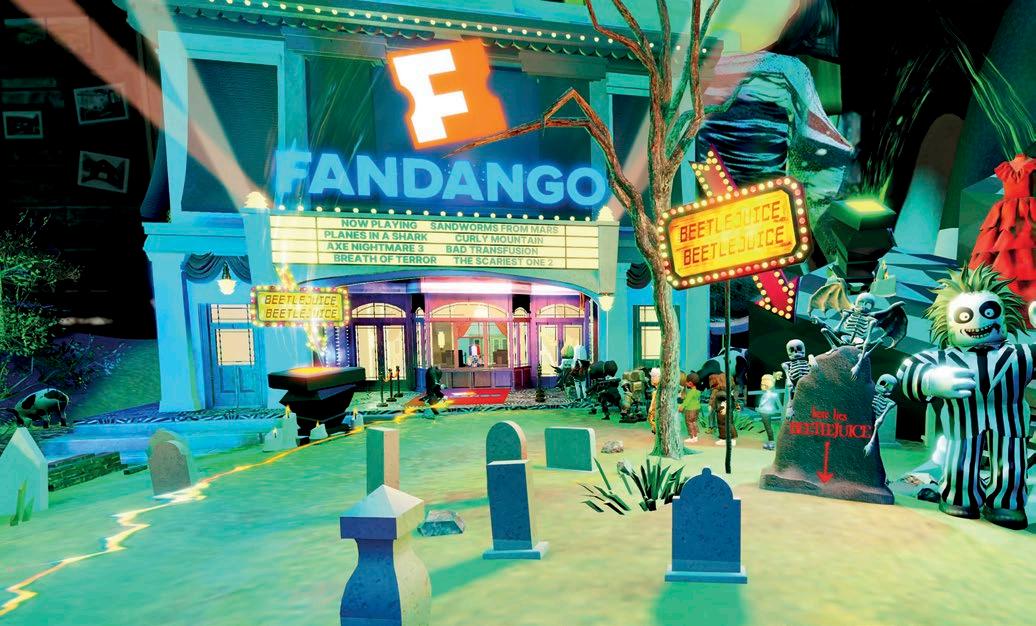








Furniture retailers embrace 3D renders as consumers demand more visual content








Trusted by over Retail, Hospitality and Pharmacy businesses to procure, stage, configure, install and support their store and restaurant technology
Proactive and responsive resolution of technical issues
Over 130 highly experienced and trained FSEs providing full UK and Ireland coverage.







IaaS – Inventory as a Service, Vista stock over 5,000 different retail technology components.
RaaS – Repair as a Service, Our in house repair team repair 97% of all defective customer technology.
Continuous improvement culture (CSI) leveraging technology to improve efficiency and effectiveness.
Over 30 years’ experience in delivering complex Retail and Hospitality IT projects.
Extensive experience and qualifications in power and data cabling & Wi-Fi survey and installation. New store and restaurant opening projects, staging of technology, installation of all cabling, networks, and technology.
Digital transformation projects – installation of infrastructure to optimise the effectiveness of digital technology.
Fully attested and PCI P2PE compliant Chip and Pin deployments.




24/7 IT service desk support.
RMM Remote Monitoring and Management.
AI and self-service technology.
Highly experienced 1st, 2nd and 3rd line retail and hospitality technology experts.
Cost effective, UK based service desk, resolving over 224K technical incidents per annum.















ISSUE
September - November 2024
EDITOR AND FOUNDER
Scott Thompson
Tel: 07528 807353
Email: scott.thompson@retailtechinnovationhub.com
Website: www.retailtechinnovationhub.com
LinkedIn: www.linkedin.com/company/ retail-technology-innovation-hub
CONTRIBUTORS
Mike Cadden
Christine Russo
Emma Stokes
PRINTED BY
Walstead United Kingdom
18 Westside Centre London Road
Colchester Essex
CO3 8PH
Email: office@walstead-group.com
Website: www.walstead-uk.com
GRAPHIC DESIGN
Steve Kelly
Concept Graphics
Tel: 07734 264835
Email: steve@conceptstudio.co.uk
© 2024 Paxton Media Limited

Welcome to the seventh issue of Retail Technology Innovation Hub (RTIH) magazine.
In this edition, we showcase the 2024 RTIH Innovation Awards, sponsored by CADS, 3D Cloud, Retail Technology Show 2025, and Business France.
Deadline for entries is Friday, 25th October, with winners being announced at the 2024 RTIH Innovation Awards ceremony, to be held at RIBA’s 66 Portland Place HQ in Central London on Thursday, 21st November. We also present the Retail Technology Innovations Report, sponsored by 3D Cloud.
This highlights the top 50 retail tech plays of 2024/25 as decided by myself and an independent advisory panel.
Innovation and technology play a critical role in the success of the retail sector, and it is great to celebrate this with the Retail Technology Innovations Report. We have now started work on the 2025 edition, which will be published both in our magazine and on our website in March of next year.
Starting on page 32, we run through a few early contenders for the next top 50. Elsewhere within these pages, RTIH talks social media, physical locations and online opportunities with Louis Rose, Co-founder of Sofa Club, and our secret shopper delves into the online experience offered by Cider, the fast fashion firm that is challenging Shein.
Also, I highlight the continued importance of high streets and town centres amid the rise in popularity of streaming services and online shopping. They are vital for the UK’s economic success. But it goes beyond that. They also play a massive role in civic and community life, in a way that Netflix, Amazon et al will never be able to do.
Retail tech solutions and retailers’ management teams are faced with the challenge of deciding which industry events to attend. Where do regional shows that are under 3,000 attendees fit into the landscape of events? Our US correspondent Christine Russo is here to lay it out.
And last but most certainly not least, regular contributor, Mike Cadden, talks about how building a community around your e-commerce brand is a powerful strategy for driving long-term sales and enhancing customer lifetime value.
I hope you enjoy reading this issue of RTIH magazine. As always, please feel free to get in touch with your thoughts and feedback at the email address below.

Scott Thompson Editor & Founder, RTIH
scott.thompson@retailtechinnovationhub.com www.retailtechinnovationhub.com




The awards, sponsored by CADS, 3D Cloud, Retail Technology Show 2025, and Business France, celebrate global tech innovation in a fast moving omnichannel world.

• Friday, 25th October: Award entry deadline
• Tuesday, 29th October: 2024 shortlist revealed
• 30th October-6th November: Judging days
• Thursday, 21st November: Winners announced at the 2024 RTIH Innovation Awards ceremony, to be held at RIBA’s 66 Portland Place HQ in Central London.
The 2023 awards ceremony drinks reception.


Is there a fee to enter the awards?:
No, it is free of charge.
Can I enter across multiple categories: Yes.
Do I need to complete all the sections in the entry form?
No, but the more information you provide, the better chance you have of producing a successful submission.
Is there a certain timeframe for nominated projects, initiatives etc?
Yes, submissions should include projects, initiatives etc that were undertaken in the past 12 months.
Who has visibility of our completed entry form and what information will be public should we win or be shortlisted?
Only our Editor, Scott Thompson, and judging panel will view submissions. The information provided in the summary section of the entry form will be made public.
Do you only accept entries from UK-based companies?
No, we accept entries from all parts of the world.
What is the shortlists process?
Shortlists will be announced in late October, then shortlisted entries will be sent to our independent judging panel who will decide upon the winners and highly commended submissions.
Shortlisted companies will be invited to attend an awards ceremony at RIBA’s 66 Portland Place HQ on Thursday, 21st November.
Do winners and highly commended companies receive post-event coverage?
Yes, post-event coverage includes articles on our website and also an in-depth awards review in our printed magazine. There is also the opportunity for a company profile type piece to be published on our site.
When is the deadline for 2024 submissions? Friday, 25th October.
When will the 2024 winners be revealed?
Wednesday, 21st November at an event at RIBA’s 66 Portland Place HQ.
This will kick off with a drinks reception, followed by a three course meal, and awards ceremony.

This award will go to a retailer enabling physical spaces to thrive via innovative technology, even as online shopping continues to grow.
We’re looking for examples of reducing friction in the customer journey, offering improved experiences, and blurring the lines between channels.
This award highlights companies that are re-inventing and re-thinking retail supply chains via innovative advancements in technology.
This award recognises payment initiatives that are both innovative and customer and retailer friendly.
We’re looking to reward a project that has the potential to increase a retailer’s competitiveness and effectiveness, and to improve the shopper experience. Bonus points if the project could be considered a first in the market.
Who has been the UK’s most innovative, customer focused retailer this year?
Judges are asked to look at highlighted tech deployments, pilots, initiatives etc and decide which retailer has been the most consistently forward thinking and customer centric over the last 12 months.
Who has been the most innovative, customer focused retailer (rest of world) this year?
Judges are asked to look at highlighted tech deployments, pilots, initiatives etc and decide which retailer has been the most consistently forward thinking and customer centric over the last 12 months.
Who has been the most innovative, customer focused pureplay this year?
Judges are asked to look at highlighted tech deployments, pilots, initiatives etc and decide which retailer has been the most consistently forward thinking and customer centric over the last 12 months.
The winner of this award will have either launched a new virtual store in the past 12 months, or overhauled and significantly enhanced an existing one.
We’re looking for retailers/brands delivering seamless and personalised shopping experiences, engaging with customers in exciting and innovative ways via the likes of gamification, livestream commerce, and the metaverse, and boosting online sales.
This award celebrates those who are at the forefront of digital transformation in the retail space, achieved through the deployment of innovative technologies.
Our judges will be looking for a company that has delivered a significant transformation project for a customer, such as integrating disparate systems, updating legacy technology, empowering the client to create seamless and personalised shopping experiences, and unlocking new possibilities to grow the business.
The Covid-19 outbreak has reshaped customer behaviour and their expectations of retailers.
This award will go to an online and/ or physical retailer that has understood and reacted in a positive fashion to these customer trends and patterns, by providing exceptional omnichannel customer experiences, powered by innovative technologies.
This award will go to a tech centric approach to retail that provides customers with a fully integrated shopping experience across bricks and mortar stores, online, mobile, and everything in between.

After a barrage of hype, the retail space is now seeing many examples of artifi cial intelligence creating value and effi ciency.
This award will highlight AI projects across the omnichannel retail landscape that have gone beyond the proof-of-concept stage, scaling and delivering results.
Traditionally, the biggest problem with sustainable technology solutions has been in the relatively high cost of implementation, often meaning that scaling them was not viable.
Things change, however, with incentives, targets and climate pledges as well as the rapid iteration of innovative technologies driving down costs in various areas.
This award will go to a retailer or brand that has worked with technology suppliers to put sustainability at the core of its values. The winning entry will show how a company has boosted its green credentials whilst also demonstrating the tangible business benefits of sustainable practices.
For 2024, we’ve decided to carve out a separate category to showcase what is being delivered in the inclusive shopping space, and shine a light on what is a huge, untapped retail customer/service market that suppliers and retailers are now really leaning in to and embracing more fully.
This award will go to a retailer or brand that has tapped innovative technology to put inclusion at the core of its values. The winning entry will show how a company has boosted its inclusive credentials whilst also demonstrating the tangible business benefits involved.
This category celebrates companies that have developed innovative technologies and worked with retailers to transform the customer experience or back-end operations or both.
This category celebrates companies that have developed innovative technologies and worked with retailers to transform the customer experience or back-end operations or both.
This award will recognise the startup with the most innovative technology offering and the company which is best placed to succeed in the long-term (management, funding, the retailers it is working with etc).
This award recognises UK retail technology project excellence, both in delivery and outcomes.
Implementation should have been completed between October 2023 and October 2024.
Judges will be looking for clear project objectives, effective and innovative implementation and tangible and demonstrable results.
This award recognises rest of world retail technology project excellence, both in delivery and outcomes.
Implementation should have been completed between October 2023 and October 2024.
Judges will be looking for clear project objectives, effective and innovative implementation and tangible and demonstrable results.
This award recognises a successful partnership between a retailer and a technology supplier, with an emphasis on the last 12 months and how said partnership has gone from strength to strength during that period.
Dinner is served at the 2023 RTIH Innovation Awards ceremony.
Our judging panel will pick their stand out entry from across the 19 aforementioned categories.

RTIH Editor, Scott Thompson, will pick his stand out entries from across the 19 aforementioned categories.

Who will be judging the
Nina Mimica, Chief Innovation and Digitalisation Officer, Studenac market
Bio: Nina has been a board member and Chief Innovation and Digitisation Officer at Studenac since October 2022.
She is responsible for the strategy and implementation of innovative technological solutions based on the use of advanced analytics and new products development; with the aim of improving customer satisfaction, optimising internal processes, increasing efficiency and ensuring new company growth and value.
Nina started her career in retail in Studenac as a Director of Marketing and Corporate Communications, after working for six years in marketing in the Deutsche Telekom group in Croatia and Germany.
To date, she has gained over 15 years of experience in the fields of advertising, marketing and corporate communications, product development, innovation and international marketing and product strategies.
She holds an MBA degree in International business from MIB School of Management, in Trieste. Nina was awarded the Business Woman of the Year award in 2023, recognising women in the upper management echelons of fast growing companies.
She is passionate about creating and implementing strategic plans,
promoting creativity and innovation that drive the transformation and growth of the company, and using technology that serves both customers and employees.
Kingsbury, Chief Technology Officer, C&C Group
Bio: From publishing to fashion retail, Carole has successfully delivered technology solutions and services for FTSE 100 and FTSE 250 companies.
Whether working as a Technology Consultant, Business Analyst, Programme Manager, or IT Director, her approach has consistently focussed on people, process, data, and technology (in that order).
For the past 16 years of her career, Carole has been privileged to have led teams of various shapes and sizes to achieve delivery of complex business and technology change in the retail sector and has always advocated for cross-functional ways of working and thinking to encourage active collaboration and create a culture of continuous improvement, development, and innovation.
Russo, Industry Analyst and Retail Influencer
Bio: Christine is an industry thought leader, Retail Technology Innovation Hub Top 100 Influencer, and the RTIH US correspondent.
She hosts the industry recognised leading podcast What Just Happened, where tech solution CEOs, leaders in retail and brands speak candidly about industry shaping issues and challenges.
With a career spanning roles in management consulting at Deloitte and executive roles in global store development, Christine’s experience includes top down analysis as well as serving time in the retail trenches. Based in New York City, she is the mom of three grown daughters and two naughty puppies.
Alan Dickson, Principal Technology Partner for Retail, BT/EE
Bio: Alan is a senior technology strategy and innovation leader with over 20 years’ experience in the telco industry.
He is concept owner and programme lead for EE/BT’s Retail IT Refresh, delivering an SD WAN network and a full replacement of all in-store trading devices, enabling the stores to trade wirelessly.
Alan delivered UK retail’s first digital identity verification solution in a physical retail environment. He is passionate about making life easier using technology, and an incredibly proud dad to three teenage daughters.
Gary Newbury, Supply Chain Advisor and Delivery Executive
Bio: Gary has established an international reputation for rapid business performance transformation and executing supply chain designs, which consistently builds market prominence, shareholder value and consumer trust.
He helps boards and business leaders to navigate ongoing disruption and reinvigorate supply chain performance across the “make-movesell” fl ow of manufacturing, third party logistics, wholesaling, retailing and the last mile.
Gary has an MBA and an MSc (Supply Chain Management & Logistics) from Cranfield University, UK and is recently CCLP, CSCMP, PMP, LSSBB and Retail Management certified.
Mischenko,
Bio: Eugene is a seasoned e-commerce leader and business consultant with over 20 years of success driving growth across B2B, B2B2C, and B2C sectors.
His expertise fuels omnichannel sales, marketing, and digital transformation initiatives. With a proven track record at companies like METRO, Sanofi, and L’Occitane en Provence, he brings strategic vision and a deep understanding of the e-commerce landscape.
As the President of the E-Commerce & Digital Marketing Association, he drives collaboration and oversees membership growth. Beyond his e-commerce leadership, Eugene is also a dedicated mentor, guiding the next generation of digital leaders and innovators.
Scott Thompson, Editor and Founder, Retail Technology Innovation Hub
Bio: Over the past 25 years, Scott has held senior editorial positions at and contributed to a number of business and technology related publications.
Prior to launching Retail Technology Innovation Hub, he was Editor at crypto publication Coin Rivet and Senior Editor at IBS Intelligence, heading up their monthly banking technology title, IBS Journal and daily online news service.
Scott also spent ten years at retail tech title, Retail Systems.
He launched RTIH as he believed there was a gap in the market for a source of independent retail technology news, analysis and research, written by people with a genuine passion for this fast moving sector.
It is now a leading publication for the global omnichannel retail technology community.
Vineta Bajaj, Group CFO, Rohlik Group Bio: Vineta is an industry expert in the e-commerce and grocery industry, bringing several years’ experience in this space.
She spent ten years at Ocado Group, the FTSE 50 online grocer and technology provider supporting its growth and
strategic M&A, strategic divestments and fundraising over £1.5 billion.
She is now the Group CFO at Rohlik Group, a Pan European online grocer spanning five countries that has unicorn status. Her experience spans the US, UK, Europe and Asia. She is a finance, tax and business expert.
Vineta acts as an angel investor and advisor to a number of pre-series to Series A startups across a variety of industries and gives her time to supporting small businesses.
Bio: Toby has over 17 years’ experience working in the food and consumer goods industry.
He researches, analyses and presents insights on innovations, technology, retail futures, sustainability and macro trends in the FMCG sector.
Natalie Berg,
Retail Analyst and Founder, NBK Retail
Bio: Natalie delivers valuable insights on trends shaping the global retail sector, with a particular focus on the convergence of physical and digital commerce. She is passionate about how retailers can enhance the customer experience and has coauthored two books on retail, including Amazon: How the World’s Most Relentless Retailer Will Continue to Revolutionise Commerce.
Natalie hosts the Retail Disrupted podcast and is a regular keynote speaker on the retail conference circuit. She is an objective TV and radio commentator with frequent appearances on the BBC, Bloomberg and Sky News, and also writes a guest column for Retail Week and Forbes.
In addition to her media work, Natalie is an elected member of the KPMG Retail Think Tank where she provides quarterly insights and analysis on the health of the UK retail sector.
Anand, Technical Programme Management, Google Bio: Karanveer is a Technical Programme Manager at Google with over nine years of work experience ranging from startups to the world’s largest technology companies.
He is a leader responsible for executing large, complex technical projects with hundreds of engineers, impacting billions of people worldwide. He holds a Master of Science in Computer Science from the University of Texas, Austin. Additionally, Karanveer served as a Board of Advisor for the University of California, Irvine.
Technology Transformation Leader at EY, Retail and Consumer Products
Bio: Matt is a partner and the technology strategy and transformation leader at one of the Big Four. He has also been a CIO and previously led large scale complex global IT transformation, delivery and recoveries for over 20 years at Accenture.
Privileged to have led international teams and worked in Europe, US and India, Matt has experienced an incredibly valuable range of cultures and environments with some of the world’s most innovative brands.
He is a fellow of the BCS (Chartered Institute for IT), elected committee member of the IT Leaders Forum, volunteer mentor, early careers advocate and proudly included in the RTIH Top 100 Retail Technology Influencers List.
The judging panel also includes: Mike Cadden, Chief Technology Officer, Marie Curie
Matt Bradley, Director and Founder, Retail Technology Show
Peter Waugh, Director, International Digital (EMEA, LAC & AP), Starbucks
Paula Bobbett, Chief Digital Officer, Boots
Nadine Neatrour, Marketing Director, Selfridges
RTIH talks social media, physical retail, online opportunities, and Covid challenges with Louis Rose, co-founder of Sofa Club.

RTIH: Tell us about yourself and Sofa Club
LR: I am co-founder of Sofa Club, alongside Tom O’Neill.
Our journey began in 2012 when we started selling sofas in the middle of shopping centres. We would travel around London moving from shopping mall to shopping mall promoting and selling our products.
Fast forward 12 years and we are the fastest growing sofa retailer in the UK with sales forecast to hit 40 million this year. Our mission is to make sofa shopping a stress free and enjoyable experience whilst inspiring everyone to create a beautiful home.
Louis Rose: “We were one of the first furniture brands on social media and have always tried to be trailblazers within our industry”
RTIH: You recently opened a new branch in Liverpool. How important is a physical presence to your business strategy?
LR: Whilst we still have three shopping centre locations in Lakeside, Manchester and Newcastle, opening a physical store of the magnitude of Liverpool is a new and significant milestone for us.
Whilst social media and our online presence has been the backbone of our business, having this physical presence allows us to connect with our customers in a more tangible way.
It provides opportunity for customers that were maybe on the fence about buying from us to come and see the quality of our products first hand and get a true sense of our brand in person.
RTIH: How was the business affected by the Covid-19 outbreak and how did you adapt to challenging times?
LR: Initially there was disruption to our supply chain which caused issues with our stock levels.
We were able to pivot really easily once our shopping centre locations were closed. All of our efforts were focused online and in fact it made us improve our online experience, creating a smoother and more user-friendly shopping experience.
We used social media to engage with our audience, showcase our products, and offer virtual consultations. This not only helped maintain our sales but also strengthened our community. In fact, we delivered some of our most creative work during this period.
The pandemic taught us the importance of moving at speed, agility and innovation and these are all lessons that made us stronger and more resilient in business today.
RTIH: You mentioned the importance of your social media presence to the business. You have, for instance, a sizeable following on Instagram and TikTok. Could you talk some more about that?
LR: Social media has always been an instrumental part of our business strategy.
We were one of the first furniture brands on social media and have always tried to be trailblazers within our industry. We were accidentally doing influencer marketing before there was a name for it and we have always had a strong following.
We now work with some of the biggest content creators in the UK and our customers enjoy tagging us in their homes.
We also try to provide as much value as possible back to our followers in terms of styling tips and inspiration. It’s a big deal purchasing a new sofa, so we try to help people as much as possible.
RTIH: What sort of online opportunities and challenges are you facing right now?
LR: Although customers are getting a lot more comfortable ordering online, there is definitely an
increase in the number of people that would like to touch and feel the product given the choice.
This is difficult when we only have a small number of offline locations.
Therefore, we invest a lot of resource into improving our e-commerce experience with things like AR technology, product detail videos and really clear to read measurements and specifications.
RTIH: What else can we expect to see from Sofa Club during 2024 and into 2025?
LR: All focus now is on Q4 and to deliver our biggest period to date. We have spent the last few months ensuring the foundations are in place.
We have increased the number of ranges we offer, giving us our best ever product selection, increased our stock hold to make sure we can deliver on our promise of next day delivery and we have introduced some senior members into the team to add a bit of experience.
Overall, we are excited about the future, our team are all locked into the mission and our customers seem to be loving it.
“We are the fastest growing sofa retailer in the UK with sales forecast to hit 40 million this year”

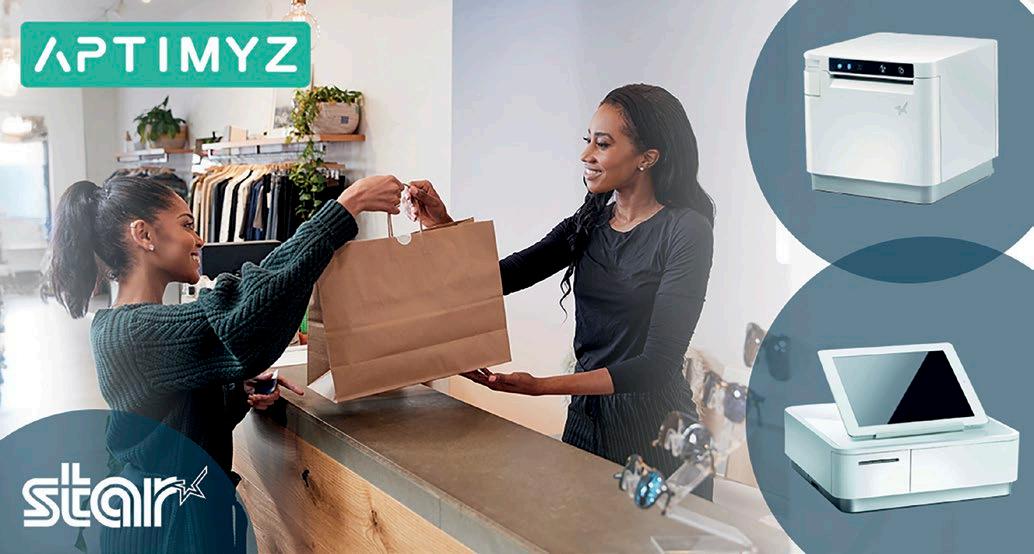
As the retail industry continually evolves and strives to reinvent itself, technology has a pivotal role to play in facilitating and driving change in order to provide an unblemished customer experience at the Point of Sale. Pioneering the transformation of retail management by incorporating cuttingedge machine learning technologies and offering a comprehensive cloud subscription solution, Aptimyz Retail takes a hybrid approach.
Such an approach not only streamlines inventory and customer management but also enhances retail operations’ efficiency and adaptability for in-store and online businesses.
Aptimyz’s focus on security, customer engagement and integration with Star Micronics’ combined printer and cash drawer solution mPOP™ as well as the compact and versatile mC-Print3, demonstrates a commitment to providing a comprehensive retail management solution.
As David Soden, CEO at Aptimyz, explains: “An extensive set of tools and support offered by Star facilitates seamless integration, enhancing software capabilities and providing a superior user experience.”
“This also enhances retail operations with advanced PoS solutions that support various retail environments and ensure a clutter-free, secure and efficient transaction process..”
At the core of Aptimyz’s innovation is its smooth integration with machine learning, which dramatically simplifies the process of inventory and customer data imports.
Retailers can now upload data files directly to the Aptimyz platform, where sophisticated algorithms analyse, align and optimise the data with minimal user intervention, saving time and significantly improving the system’s accuracy by learning from user feedback.
Aptimyz also offers a robust set of features to optimise physical and online retail operations with its powerful inventory management system ensuring businesses of any size can manage products effectively.
The platform’s customisable real-time reporting provides immediate access to critical data on inventory, sales and customer insights, enabling informed decision-making and strategic planning.
Integration with major e-commerce platforms such as WooCommerce, Shopify and BigCommerce provides a seamless shopping experience across in-store and
online channels, allowing for real-time syncing of inventory and customer accounts to create efficiencies and enhance the customer shopping experience.
In order to eliminate the high upfront costs and expensive support fees typically associated with PoS and back office management systems, Aptimyz has partnered with Clover to offer a cloud-based model that delivers a costeffective solution.
Its user-friendly design provides easy setup and migration, minimising business interruption and facilitating smooth transitions from legacy systems.
With a focus on flexibility, efficiency and scalability making it a game-changer for retail businesses looking to stay ahead in a rapidly evolving market, Aptimyz is clearly redefining retail management.
As Soden concludes: “Combined with the robust build quality of Star’s products instilling a sense of reliability, businesses can operate seamlessly even in the most demanding conditions. This contributes to an unblemished customer experience at the Point of Sale.”
For more information, visit: aptimyz.com star-emea.com

LEADING PUBLICATION FOR THE GLOBAL
OMNICHANNEL RETAIL TECHNOLOGY COMMUNITY
Retail Technology Innovation Hub was launched in 2017 by Scott Thompson, former Editor of Retail Systems. It is now the leading website for the global omnichannel retail technology community.
Our retailer visitors come from a wide range of companies, across tiers one, two, three and four.
Our readership includes IT directors, e-commerce directors, the heads of multi-channel, mobile, loss prevention, supply chain, payments and operations, and those with responsibility for the likes of loyalty initiatives, customer experience, social media and marketing.
The UK is RTIH’s biggest demographic, followed by the rest of Europe and then North America and the Middle East. We also have a number of visitors from the likes of India, China, Japan, Korea, and Australia.
Via our website, printed edition and digital campaigns, we can provide powerful advertising and sponsorship opportunities to reach key retail technology decision makers.
We have one of the most engaged audiences in the retail technology space, and are committed to helping our clients achieve tangible results, which is why the
vast majority of them return on a regular basis. Advertising and sponsorship opportunities include:
• Promotional articles (company profiles, interviews, thought leadership pieces etc)
• Advertising banners, available both on our website and daily e-newsletter
• Bespoke events, roundtables, webinars, podcasts etc
• E-newsletter sponsorship (advertise in our daily newsletter)
• E-blasts to our database of requested newsletter subscribers
• Reports, whitepapers and online surveys
For further information, please email: scott.thompson@retailtechinnovationhub.com
Or visit:
retailtechinnovationhub.com/advertise-with-us






In the ever evolving landscape of e-commerce, brands are constantly seeking innovative ways to stand out and foster deeper connections with their customers.
One emerging trend that promises to redefine customer loyalty is community building. By cultivating a strong, engaged community around your e-commerce brand, you can drive longterm sales and significantly enhance customer lifetime value (CLV).
This article explores the strategies for building a brand community and the profound impact it can have on your business.
Community building goes beyond traditional loyalty programmes by creating a sense of belonging and shared purpose among customers.
A well nurtured community can transform one-time buyers into loyal advocates, reduce customer churn, and increase the frequency and value of purchases.
This emotional connection often translates into higher CLV, as customers are more likely to remain loyal and continue purchasing from a brand they feel personally invested in.
Strategies for building a brand community
1. Define your brand’s purpose and values
The foundation of any strong community is a clear and compelling brand purpose. This purpose should resonate with your target audience and reflect their values and aspirations.
When customers believe in what your brand stands for, they are more likely to engage with your community and advocate for your products.
Example: Patagonia’s commitment to environmental sustainability attracts like-minded customers who are passionate about protecting the planet. This shared purpose creates a strong bond between the brand and its community.
2. Create engaging and relevant content
Content is a powerful tool for community building. By producing high quality, relevant content, you can attract and retain customers while driving engagement. This content can take various forms, including blog posts, videos, podcasts, and social media updates.
Tip: User-generated content (UGC) can be particularly effective. Encouraging customers to share their experiences and stories related to your brand not only provides authentic content but also makes community members feel valued and heard.
3. Leverage social media platforms
Social media is an ideal platform for building and nurturing your brand community.
Each platform has its unique strengths, so it’s important to choose the ones that best align with your audience. Regularly engage with your followers by responding to comments, sharing user-generated content, and hosting live events.
Example: Glossier, a beauty brand, has successfully used Instagram to build a community of beauty enthusiasts. They frequently repost customer photos and reviews, making their followers feel like an integral part of the brand.
4. Foster two-way communication
Building a community is not just about broadcasting your message; it’s about creating a dialogue.
Encourage customers to share their opinions, feedback, and ideas. This two-way communication makes customers feel valued and respected, deepening their connection to your brand.
Tip: Consider creating private groups or forums where customers can interact with each other and with your brand more intimately. These spaces can serve as incubators for loyal brand advocates.
5. Offer exclusive benefits and rewards
Exclusive benefits and rewards can incentivise customers to join and actively participate in your community. These rewards can include early access to new products, special discounts, or invitations to exclusive events.
Example: Sephora’s Beauty Insider programme offers members exclusive perks such as birthday gifts, early access to sales, and free beauty classes. This programme not only rewards loyal customers but also builds a sense of belonging and exclusivity.
Patagonia’s commitment to environmental sustainability attracts likeminded customers who are passionate about protecting the planet.

6. Organise events and experiences
Events and experiences, whether virtual or in-person, can create memorable interactions that strengthen community bonds. These events provide opportunities for customers to connect with your brand and with each other on a deeper level.
Tip: Host webinars, workshops, or meet-and-greets with influencers or company representatives. These events can be educational, entertaining, or simply a way to celebrate shared interests.
7. Encourage advocacy and word-of-mouth
Satisfied community members are your best advocates. Encourage them to spread the word about your brand by making it easy to share content and providing incentives for referrals.
Word-of-mouth marketing is incredibly powerful, as recommendations from friends and family are often more trusted than traditional advertising.
Example: Dropbox grew exponentially through its referral programme, which offered extra storage space to both the referrer and the referred. This strategy not only attracted new users but also strengthened the loyalty of existing ones.
impact of community on customer lifetime value
customer retention
A strong community fosters loyalty, leading to higher customer retention rates. When customers feel connected to a brand and its community, they are less likely to switch to competitors.
This long-term engagement directly contributes to increased CLV, as the cost of retaining a customer is significantly lower than acquiring a new one.
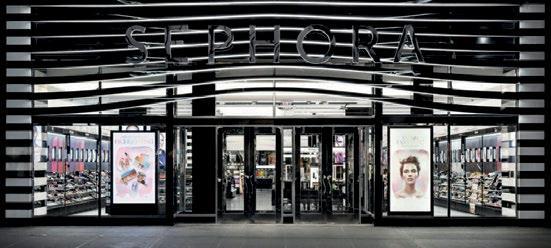
When customers believe in what your brand stands for, they are more likely to engage with your community and advocate for your products.
Higher purchase frequency
Engaged community members are more likely to make repeat purchases.
Regular interactions with your brand, through content, events, or discussions, keep your products top-of-mind. This increased purchase frequency boosts overall sales and enhances CLV.
Greater average order value
Community members often have a deeper understanding of your brand and its offerings.
This familiarity can lead to higher average order values, as customers are more likely to explore and purchase additional products. Moreover, they may feel more confident in their purchases, reducing return rates.
Enhanced customer advocacy
Brand advocates, nurtured within a strong community, can significantly amplify your marketing efforts.
These advocates are more likely to refer new customers and share positive experiences, expanding your reach and attracting high quality leads. The costeffectiveness of word-of-mouth marketing further enhances CLV.
Building a community around your e-commerce brand is a powerful strategy for driving long-term sales and enhancing customer lifetime value.
By defining a clear brand purpose, creating engaging content, leveraging social media, encouraging communication, offering exclusive benefits, organising events, and encouraging advocacy, you can cultivate a loyal and active customer base.
This community not only boosts retention and purchase frequency but also transforms satisfied customers into passionate brand advocates, ensuring sustained growth and success in the competitive e-commerce landscape.
About the author:
Mike Cadden is an experienced retail IT director and CIO with 25 years’ experience running technology teams and strategic delivery for many leading UK and international retailers.
The recently closed Bromley Picturehouse was much more than a cinema and will be greatly missed, says RTIH Editor, Scott Thompson.
On the evening of Thursday, 1st August, the end credits sadly rolled for Bromley Picturehouse, with fans and friends gathering in the venue’s bar to raise a glass to the iconic London cinema.
Dating back to 1936, representing the art deco style of famed architect George Coles., the building started life as an Odeon, became an Empire Cinema in the noughties, and was purchased by Cineworld offshoot Picturehouse in 2019.
The legacy frontage was then restored, with missing historic features reinstated, along with surviving interior features such as the original rubber floor and art deco lights.
The closure comes amid rising operational costs and a decline in admissions, according to a Picturehouse spokesperson. No mention of Cineworld’s current struggles and radical restructuring plan. But hey ho…
The reason I write this article is that my partner and I have been regular Bromley Picturehouse customers since moving to nearby Grove Park in SE London last year.
It was more than a cinema. It was a second home for me, a place to escape the stresses of life and work and switch off for a few hours.
There was a great selection of movies, including blockbusters, documentaries, foreign language films, and low budget British offerings.
The staff were fantastic - friendly, helpful and knowledgeable - and I wish them all the best.
The building was a rare gem in a world of faceless multiplexes, and there was a palpable sense of community
spirit, thanks to the likes of dementia friendly screenings, and over 60s, dog friendly and watch with baby events.
Whilst I’m sad that the end has come, it has been heartening to see regulars share their memories of Bromley Picturehouse via social media.
For instance:
“I left the Picturehouse in tears on the last night…I have loved coming there with my family, but entirely happy and feeling safe coming on my own - a home from home. I will miss it and hope this won’t be the end forever.”
“Singing in the Rain (one of the final screenings). Bromley Picturehouse now closed. It’s over. Thank you for being there when I’ve needed you, being my sanctuary when I needed to escape. You transported me away.”
“Oh no, this is terrible news. Although we live on the opposite end of London my dog and I loved coming down for the dog friendly screenings and the staff there were always the friendliest and most welcoming of all Picturehouses.”
The aforementioned responses, along with a petition to stop the community losing a piece of its history that currently has almost 6,000 signatures, highlight the continued importance of high streets and town centres amid the rise in popularity of streaming services and online shopping.
They are vital for the UK’s economic success. But it goes beyond that. They also play a massive role in civic and community life, in a way that Netflix, Amazon et al will never be able to do.
RIP Bromley Picturehouse. To quote Woody in Toy Story 3: “So long, partner.”


DAs consumers demand more visual content, furniture retailers are embracing 3D renders, says Ben Young, 3D Cloud Sales Director EMEA.
o more with less” has become the battle cry of 2024 for the retail industry. Every aspect of retail operations is under scrutiny, from logistics to customer service, and product imagery is no exception.
Today’s retail customer experience is multifaceted and complex, with consumers often starting their research online and completing their purchases in-store.
According to the 3D Cloud Furniture Shopping Trends Study 2024, the average consumer browses three websites and visits the same number of physical stores before making a purchase. This extensive process demands visual content that delivers a consistent and comprehensive experience across all touchpoints.
Moreover, the desire for personalised and visualised purchases online is stronger than ever, with more than 70% of consumers using online tools to make buying decisions.
The data also shows a clear preference for retailers who offer 3D visualisation tools, allowing customers to customise and view furniture in context.
So, what does this mean for CGI and photography?
Did you ever wonder why Amazon provides space to upload up to nine images for a single product? High quality photos show customers exactly what they’re buying online by providing proof of texture, shape, colours, and size, and suggesting different ways to use the product.
Customers expect a variety of images, with studies by Shopify revealing over 30% prefer multiple photos, and around 60% prefer a 360º view.

Traditional methods of generating visual content have struggled to scale and become cost-efficient enough to meet the demand for high quality visuals in a world where merchandisers and marketers are expected to do more with less.
While traditional photography and CGI still play a role in brand marketing and merchandising, visual merchandisers now have new options. These options enable them to meet customer expectations with consistent, high quality visuals for every product iteration.
The challenge lies in selecting the best tools to create the various different types of content necessary for multichannel marketing: captivating product images, inspiring lifestyle scenes, interactive experiences, store signage, and advertising content.
While traditional photography and CGI have been industry staples, the rise of photorealistic 3D content is transforming how retailers present their products.
This new technology offers unparalleled flexibility and efficiency, catering to the combined needs of product customisation, visualisation, product page visuals, and lifestyle imagery.
The multi-tool approach to visual merchandising Visual merchandisers are tasked with showcasing individual products in their best light, creating enticing lifestyle imagery, and providing customers with the ability to personalise and visualise their purchases in realistic detail.
Each of these goals requires different tools, and understanding how to leverage traditional photography, CGI, and 3D renders can lead to a more effective and engaging consumer experience.
The role of traditional photography
Despite the rise of new technologies, traditional photography can play an important role in for crafting lifestyle imagery, or imagery that includes people.
High quality photoshoots can capture the ambiance and feel of a fully designed room, offering inspiration to customers and demonstrating how products can fit into various settings.
The cost and complexity are high and the environmental impact of transporting furniture to and from photo studios can negatively impact a company’s ESG goals, but the emotional connection and aspirational appeal of lifestyle photography may be worth it in some cases.
The role of computer generated imagery (CGI) CGI continues to be a powerful tool for creating detailed and imaginative high resolution lifestyle scenes. It allows for the integration of products into virtual environments that might be difficult or expensive to create physically. CGI continues to play a role in advertising campaigns or catalog spreads that require significant creativity to create unique visual impact. The downside of CGI for retail applications is that it can be both time intensive and costly, as well as requires extensive communications between internal teams and CGI partners for annotations and amends.
The rise of photorealistic 3D product renders While traditional photography and CGI are still good options for creating print spreads and signage, lifestyle imagery, photorealistic 3D renders are revolutionising product page and catalogue imagery.

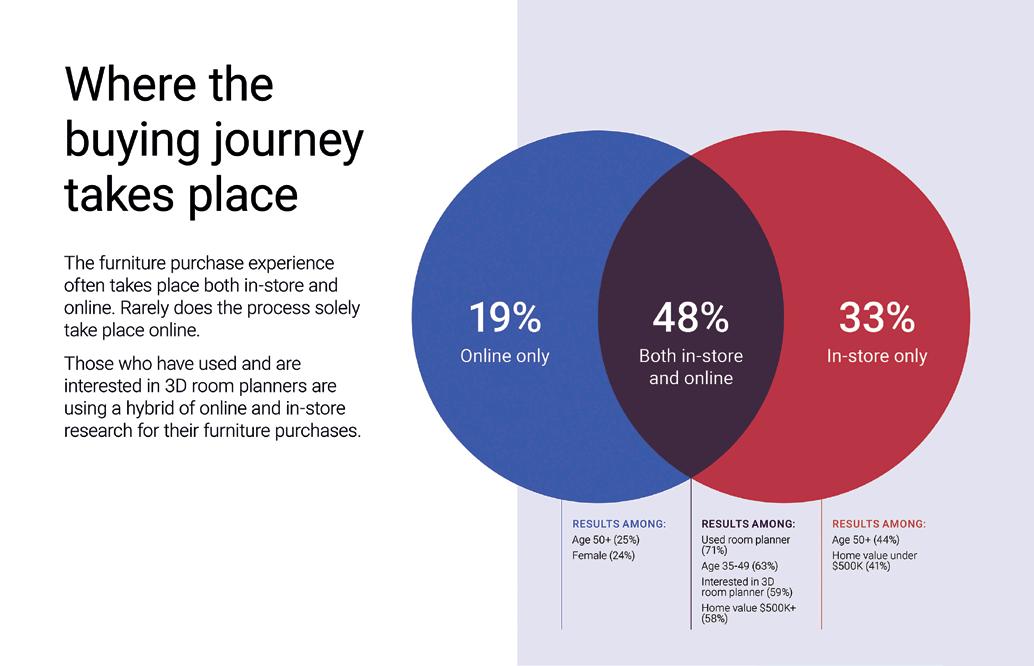
Here’s why 3D rendering is becoming the preferred choice for many retailers:
• Convincing realism: Photorealistic 3D renders achieve a level of detail and accuracy that can rival traditional photography. Advanced rendering technology captures the nuances of materials, textures, and lighting, providing a lifelike representation of products.
• Cost-effectiveness: Once 3D models and materials are created, they can be reused and manipulated easily. This reduces the need for repeated photo shoots and associated costs. A single 3D model can be rendered in different angles, materials, colours, configurations, and settings without additional costs.
• Flexibility and adaptability: Changes in product design, colour, or finish can be made quickly without new photo shoots. This adaptability allows retailers to keep their online catalogues current and respond swiftly to market trends.
• Consistent quality: 3D renders ensure consistent image quality across all products. Controlled lighting and environments eliminate the inconsistencies often found in traditional photography, maintaining a cohesive and professional look throughout the retailer’s online presence.

• Enhanced interactivity: 3D renders offer customers an immersive online experience. Features like 360° spins, zooming in on details, and visualising products in different settings create a more engaging shopping experience, bridging the gap between physical and online retail.
• Scalability: For large inventories, 3D rendering is highly scalable. Once a 3D model is created, it can be rendered in countless ways with minimal effort, making it ideal for frequent updates or product expansions.
3D product renders - pros and cons
Photography and CGI make product page visuals much more expensive and rigid than they need to be. Using 3D to meet the consumer desire for accurate and consistent product visuals makes sense.
In many cases 3D renders can replace lifestyle photography as well, but there is still a role for traditional photography and CGI when it comes to creating highly detailed creative that may be used in print advertising campaigns.
Retailers can leverage the strengths of each tool, creating a comprehensive and engaging visual merchandising strategy. This multi-faceted approach not only enhances the customer experience but also provides significant efficiencies and cost savings, positioning retailers for success in a competitive market.
By embracing photorealistic 3D renders, retailers can provide an enhanced customer experience, ensuring consistent, detailed, and engaging visuals that help drive sales and build brand loyalty. This shift not only addresses the demand for high-quality content but also aligns with the industry’s push to do more with less.
What would your products look like in 3D?
If you’d like to find out more about how retailers are using 3D and see some of your own products transformed into 3D content, contact me at ben.young@3dcloud.com
Traditional photography
High emotional appeal and inspiration. May include people.
Convincing real-life settings.
Excellent for creating aspirational and lifestyle imagery.
High costs and logistical complexity.
Inconsistencies in image quality and lighting.
Difficult to manage, update, and maintain.
Environmental impact can be detrimental to a company’s ESG goals
Time-consuming and labour intensive
CGI visuals
Ability to create detailed and imaginative scenes.
A high degree of creative control.
Ideal for creative print marketing campaigns.
Limitations on scalability
Expensive to visualise the full range of options for configurable products
High skill requirement for quality results.
Time consuming and costly.
Very manual management via email and/or spreadsheets
Back and forth between relevant internal teams and CGI partners can be a headache.
3D product renders
High level of detail and accuracy.
Cost-effective due to reusable models and reduced need for photo shoots for individual products and online or catalog lifestyle content.
Highly flexible and adaptable to market trends and updates.
Endless reuse ensures consistent image quality and professional presentation.
Provides an immersive and interactive customer experience.
Scalable for large inventories and frequent updates.
Requires initial investment in creating 3D models and a 3D DAM for managing and distributing content.
Quality depends on the accuracy of initial models.
Large-scale representations (e.g., billboards or signage) may not be as high resolution as a photograph or CGI content.

As a seasoned secret shopper, I’ve had my fair share of adventures in the world of retail. From the smooth sailing of Primark Click and Collect to the tumultuous terrain of Pull and Bear’s in-store tech, I’ve seen it all.
For my latest column, I decided to delve into the online shopping experience with Cider, a brand I’ve been a customer of for a while. Known for its fresh, contemporary feel and innovative features, Cider is rapidly making a name for itself among Gen Z
and millennials. Here’s a detailed look at my experience and why it might just be the next big thing in fast fashion.
From the moment I downloaded the Cider app, I was struck by its vibrant and modern design. It feels incredibly young and fresh, perfectly capturing the aesthetic that appeals to its target
audience. The app is intuitive and user-friendly, making it easy to browse through a wide range of clothing and accessories. What sets Cider apart, however, are the unique categories.
Instead of just the standard “tops” or “dresses,” it offers categories like “elegant,” “cute,” “coquette,” “kpop,” “gothic

From the moment I downloaded the Cider app, I was struck by its vibrant and modern design.
aesthetic,” and the intriguingly named “blokecore.” This categorisation feels very Gen Z and TikTok inspired, making it easy to find clothes that match your style and mood.
Cider, much like Shein a few years ago, is quickly rising in popularity among younger shoppers. The brand, founded in China in 2020 by four friends, has become a go-to for trendy clothing.
Its growth has been rapid, and it now employs over 500 staff across 14 countries, shipping to more than 130 countries worldwide. The company’s global appeal is evident in its vibrant and diverse collections inspired by street styles from cities like New York, LA, Shanghai, and Seoul.
Cider has also made significant strides in building a strong social media presence, boasting 5.1 million followers on
Instagram and over 4.4 million likes on TikTok. The brand’s active engagement with its community is a major factor in its success.
One of the standout features of the app is its “Our Picks” section. As you start browsing and buying, the app curates a selection of clothes that it thinks you might like. I was pleasantly surprised by how well Cider’s algorithm understood my style. The vast majority of the clothes suggested to me were items I would wear, which made the shopping experience even more enjoyable.
Additionally, Cider has an editorial section where you can see stylists’ picks, showcasing curated outfits in artful editorial photos that wouldn’t look out of place in a fashion magazine.
Features like “The Summer Series: Cider in the City” show different city looks, with models photographed in places like
London and LA wearing Cider clothes. The feature adds a layer of inspiration and creativity, elevating the app above many other rivals.
Cider promotes its “Cidergang” community, a space for its most loyal customer base and fans to use social platforms like Instagram, TikTok, and Discord to discuss collections and initiatives and engage with other shoppers. This community driven approach helps build a strong connection between the brand and its customers, fostering loyalty and engagement.
You also see this in-app with the ‘Discover’ section of the Cider app, another innovative feature that enhances the shopping experience. Here, users share reviews and photos of their outfits, allowing other customers to “like” the posts.
Cider encourages this community interaction by
Cider’s loyalty programme, Cider Club, is one of the best things about the brand.

offering incentives for users, who earn points for each item they review. It’s a fantastic way to see how the clothes look on real people and get honest feedback.
Cider’s loyalty programme, Cider Club, is one of the best things about the brand. With three levels, it offers various perks and rewards that make shopping even more rewarding.
Members can earn points for purchases, which can be redeemed for gifts like bags, shoes, and hair clips or used for money-off coupons. There’s a good selection of freebies ranging from low to high points, making it accessible for everyone. The Cider Club is a brilliant way to keep customers engaged and loyal to the brand.
Cider’s My Fit Size feature allows you to input your height, weight, and measurements, down to “belly size,” to ensure the best clothing size for you. I found this feature to be fairly accurate, although a couple of items in my order didn’t look as flattering on me as they did on the 5’10” flat stomached model in the picture. Nevertheless, this personalised sizing tool is a valuable addition that helps customers find the right fit more often than not.
Cider’s returns policy is fascinating. While you can do the traditional return within a limited time, it also offers an option to keep the clothes and receive an instant store credit for the total amount of the items you want to return.
When I tested this option, I quickly received the credit within 24 hours and gifted the clothes to a friend. Additionally, there’s an option to get an immediate refund
without returning the clothes, although this is only 50% of the value. The approach is a clever way to handle the pesky returns issue that plagues online retailers.
It’s important to note that Cider’s clothes are definitely fast fashion. They are not the best made garments in the world, nor is the material the highest quality. However, the prices reflect this, and the style and trendiness of the clothes are what customers are looking for.
Delivery time is six to nine business days, so it’s not the best option if you need something quickly, but the wait is worth it for the price and style.
Despite its efforts towards sustainability, including the use of biodegradable packaging and a pre-order business model, Cider has faced criticism for greenwashing.
While it claims to have policies to reduce its environmental impact and uphold human rights, questions remain about working conditions, supply chain
transparency, and the use of recyclable materials.
Cider offers a fresh online shopping experience that resonates with Gen Z and Millennials. Its unique categories, personalised picks, and active user community set it apart from other fast fashion retailers. While the quality of the clothes reflects their fast fashion nature, the affordable prices and trendy styles make Cider a popular choice.
The intuitive app, engaging loyalty programme, and innovative returns policy enhance the overall shopping experience, making it easy to see why Cider is quickly becoming a favourite among young shoppers.
As long as customers are aware of the fast fashion nature of the products, Cider provides a stylish and affordable way to keep up with the latest trends. For me, it has proven to be a fun and rewarding shopping experience, and I look forward to seeing how this rising star continues to evolve.
Cider, much like Shein a few years ago, is quickly rising in popularity among younger shoppers.

Retail tech solutions and retailers’ management teams are faced with the challenge of deciding which industry events to attend. Where do regional shows that are under 3,000 attendees fit into the landscape of events?
RTIH’s US correspondent Christine Russo is here to lay it out.
Tech solutions providers: Retailers make relationship driven decisions, not transactional. Does that mean they award contracts to their Uncle Vinny? No. But what it does mean is that the tech solution providers become extended team members wholeheartedly interested in the department and retailers’ success. Period.
And sooooo, in case it isn’t clear, these smaller events are important ways to form, build, and solidify relationships. It could be their intimacy, or it could be because they come at the very beginning of budget season. If you are playing it correctly, you are going in on that spreadsheet and this is one way to get in front and spend time with your prospect.
In the US, there is the monster 40,000+ attendee NRF, the ever popular 10,000+ Shoptalk and the regionals (< 3,000). This is the ecosystem. And, unfortunately for those who need to
validate participation to either the CEO or the CFO, it can be challenging. In a world of IQ vs EQ, the EQs have a chokehold on industry events and it’s a see and be seen landscape.
Here are some musings about the tech solution provider and retailer courtship dance.
One of the criteria I feel is important to rank an event’s effectiveness is to monitor the non-event sponsored gatherings (roof tops, cocktails, dinners, etc.) taking place around the event itself. These are super important for tech solution providers to strengthen relationships, have more relaxed conversations and build the ‘know, like, trust’ pathway.
The give back
I stand by my strong opinion that (the right) free things draw people in.

Unfortunately, we still see vendors leering from behind their tables or from their booth focused on only speaking to “viable” contacts.
Do not underestimate the importance of panels. Try to participate. Retailers love them. Ok, sometimes they like to hide out and recover from sensory overload but MOSTLY it is an audience full of people seeking knowledge. You can be a voice of authority.
Distribution delineation is all but dead
Many of these regional shows started as singularly focused. One for e-commerce, one for DTC, etc. With siloed distribution structure a thing of the past, so have the events softened (blurred) the lines - it’s more broadwhich offers more opportunity.
I believe these regional events are akin to freshman orientation. Lots of people walking in with a subdued excitement hoping to meet likeminded individualsand to learn and have fun.
The events that cater to this energy are clearly pulling ahead and drawing larger crowds. In my day, to remember names of new friends, we sat in a circle and had to come up with an alliterative nickname. I was Kamikaze Crissy. What was yours?

Retailers can give advertisers something both illusive and extremely lucrative: accurate, attributable, and immediately actionable data.
This year, over $140 billion will be spent on digital retail advertising globally.
Amazon likely captures more profit from its advertising services than through the fulfilment of products. Retail media is being hailed by many as a gold rush, and with these numbers, it is obvious why.
Many retailers are opening up their businesses to drive more opportunities to reach key audiences (and even more importantly key new revenue pools) through retail media advertising.
Seeing this gold rush, one could argue that a frontier that has yet to be fully explored and mined is the store itself. Since the end of the pandemic, online growth has plateaued, and still 93% of all retail dollars are spent in a physical store.
With their in-store offering, retailers can give advertisers something both illusive and extremely lucrative: accurate, attributable, and immediately actionable data on what drives a shopper conversion and how effective their advertising spend is.
In short, because retailers have precise data on instore advertising and conversion, they can be the new
Retailers using their premises and channels simply as a DOOH will never be competitive.
hot digital media opportunity for brands to connect with consumers.
With 25 years of experience in-store working with seven of the top ten largest retailers in the world, our technology is ubiquitous to stores on almost every high street. Many of our largest customers are in a continuous test and learn cycle, constantly optimising their in-store retail media networks to enable new and larger revenue opportunities every day.
Grocers, convenience stores, and high-value product categories such as beauty and electronics, are further on, and what we see in these retailers is incredibly exciting. Using their deep pools of data achieved from in-store sensors and first-party data from sales capture and loyalty programmes, these retailers can fully drive full funnel attribution and use in-store displays as highly dynamic contextual media surfaces tailoring messaging to customers based on their interests and goals.
Empowered with AI, these smart store platforms deliver personalised shopper messaging at scale.
While retailers recognise that 93% of all sales occur in the store, the power of measuring activity in the aisles is still a new concept. Retailers using only e-commerce and transactional sales data operate with a sliver of the information that they could if measuring consumer behaviour and action in-store.
In-store digital advertising is also a unique value as it avoids some of the largest pitfalls of online. FMCG brands know that 23% of all digital ad spending is expected to be lost to digital ad fraud this year, with over $84 billion lost last year.
Online programmatic is also quite murky when considering cost to brand vs. revenue to retailer, so it is clear why savvy advertisers appreciate the clarity and attributable nature of the data that in-store retail networks can provide.

From this data, campaigns can be created and honed in real-time to ensure campaign messaging is as compelling as possible, building brands and driving sales. So, what is it about the data gained in the store that makes it so valuable? Scale, Opportunity and Profit. It is robust - based on real people in a physical space and the decisions that they make.
Using advanced sensors, which crucially do not rely on cameras due to privacy laws across territories, STRATACACHE technology provides anonymous shopper pathing, which can be tied back to loyalty or transaction data at the register by opt-in. This insight gives retailers the power to build audiences based on real in-store shopping behaviour.
For example, retailers can see a shopper who lingered in the pet aisle of a store but did not make a purchase. This information could prompt a retargeting campaign across streaming/CTV or mobile with a compelling offer to encourage immediate conversion online or during the next store visit.
With in-store analytics, brands can track impressions, engagement, conversion, and sales. This information is crucial for justifying advertising spend and securing future budgets.
These real-world behavioural data points along with existing first-party and sales data create a wealth of attributable information. With this information, retailers can work with brands to optimise promotional messages
- changing where they appear, the formats that they take, as well as the artwork and language used.
With strong data, customers are targeted with contextualised media, that is, messages that are hyperpersonalised to them based on a variety of factors that could include where a customer is in the funnel, their mindset at different times of the day and in different areas of the store or website, other contributing factors such as the weather, the results of a local sports team as well as crucial information that impacts shopper experience such as wait times and stock availability.
Tracking a store in this way opens up the ability to radically improve the shopping experience for shoppers while increasing product and category activation.
In addition to unlocking the retail media network capabilities of the physical store, using in-store sensors and the analytics derived from them also minimises waste: the real-time status of perishable products can be known for discounting, wait times monitored, staff activity maximised, and shrink mitigated.
We call this the ‘Sentient Store,’ a shopping experience in a physical retail space where advanced sensors receive real-time dynamic data signals. At the same time, AI provides real-time and predictive
“With
knowledge of the store, the inventory, the shopper, and the journey, helping retailers identify opportunities for sustainable growth.
The delta between a digital out-of-home (DOOH) proposition and a true retail media network is data. Retailers using their premises and channels simply as a DOOH will never be competitive.
In charging merely for impressions or opportunities to see, retailers are missing out on the revenues that can be earned from the personalisation and responsive campaigns retail media networks provide.
Tracking and serving shoppers adaptive, relevant campaigns in-store and on their television and mobile screens is a capability that retailers have not had before. Those not exploring this new frontier will lose out not just to the likes of Amazon but also their bricks and mortar neighbours.
The insights to be unlocked, the efficiencies to be executed, and the opportunities to be unearthed through the data to be found in-store are precious. They will transform retail forever.
About the author
Chris Riegel is CEO and Founder of STRATACACHE.
25 years of experience in-store working with seven of the top ten largest retailers in the world, our technology is ubiquitous to stores on almost every high street.”


Earlier this year, RTIH launched its second Retail Technology Innovations Report, sponsored by 3D Cloud. This highlighted the top 50 retail tech plays of 2023/24 as decided by our Editor, Scott Thompson, and an independent advisory panel. We have now started work on the 2025 edition, which will be available in our magazine and at our website in March of next year. Here are a few early contenders for the next top 50.
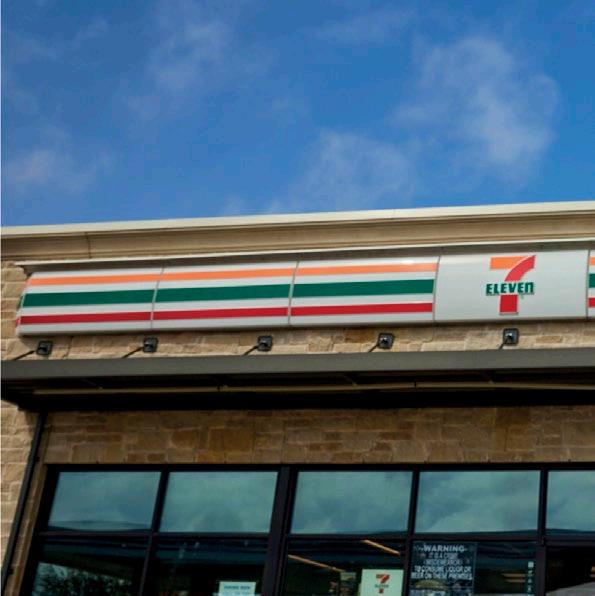
7-Eleven has upgraded its first stores to use the Grabango checkoutfree system. These are all located in Australia and represent a new continent for USbased Grabango.
7-Eleven Australia announced last year that it was partnering with the company to develop My 7-Eleven App Pay and Go 2.0. The Grabango technology uses AI to enable customers the choice to skip the register, without the need to scan purchases using their device.



Earlier this year, Walmart teased a No Boundaries launch in Walmart Discovered on Roblox and reported an overwhelmingly positive initial response. And in August, it officially went live. This enables users to shop and try on the retailer’s first UGC drop, featuring virtual versions of real-world No Boundaries items.
Luxury fashion platform SYKY, the brainchild of Alice Delahunt, former Chief Digital and Content Officer at Ralph Lauren & Global Director of Digital & Social at Burberry, has announced the launch of a fashion experience on Apple Vision Pro.
Debuting with a showcase from avant-garde Japanese label Anrealage, the SYKY app offers a way for fashion enthusiasts to enter
It’s possible to buy real-world No Boundaries items from three
and explore the worlds of legendary designers and fashion houses.
Pitched as a bridge between digital and physical fashion, it creates a spatial environment that immerses visitors in an interactive world. According to SYKY, hyper-real depth, textures and storytelling components create levels of immersion that have only been possible through physical fashion experiences, like runway shows, until now.
“We believe that the fashion
fashion trends and get a virtual item designed by Dioncella, a Roblox creator, for free.
Users can also buy the first ever Animation Pack, a platform offering inspired by No Boundaries.
industry is entering a period of remarkable change as realities merge and digital fashion experiences blend with the physical world,” says Delahunt.
“We’re excited to continue leading this new frontier with the launch of our Apple Vision Pro app, where we will transport consumers to the front row of the fashion industry, offering them access to impeccable design and inspiration with the ultimate luxury fashion experience.”


Boxbar Tech and Parklife Festival are laying claim to an industry first.
This followed on from a Boxbar installation at The Warehouse Project events series in the autumn and winter of 2023.
Parklife Festival is one of the UK’s leading music festivals.
The 2024 edition saw the likes of Doja Cat, Disclosure, Becky Hill and Kaytranada perform across the weekend of 8th and 9th June.
Boxbar’s deployment at the event made Parklife the first music festival in the world to dispense a complete drinks menu utilising automated self-service technology.
Local sharing app Olio is launching a new Deals section in partnership with reduced to clear SaaS platform Gander.
This gives food businesses a way to drive discounted food sales in-store, by showing Olio’s four million UK users cut price groceries at participating stores in their local area.
Users of Olio’s app can browse yellow sticker deals at Gander’s list of partner retail groups, including Morrisons Channel Islands, Filco Market, Pricewatch Group and Sewell on the Go, displaying branded products from Nisa, Morrisons Daily and Co-op.
App users can add their favourite deals to a watchlist on
Olio to keep an eye on availability, and then head into the store to purchase them as normal.
B&Q is trialling a robot delivery option in Milton Keynes with DPD. Customers will be notified in advance about that their order (related to smaller parcels) being delivered. Once they confirm they will be home to accept the parcel, a robot will be dispatched. The deliveries are trackable on a map and shoppers are notified when the robot reaches their property. They are then given a code to unlock a compartment and retrieve their parcel.

Instacart and Aldi South Group are to expand their partnership globally.
This includes the roll-out of Instacart’s Connected Stores technologies across the retailer’s stores in the US, including In-Store mode and Carrot Tags, as well as fulfilment technology to power e-commerce orders.
And in a European first, Aldi South Group is testing Caper Carts in Austria, Instacart’s AI powered smart carts designed to ease the checkout process and personalise the shopping experience for customers.
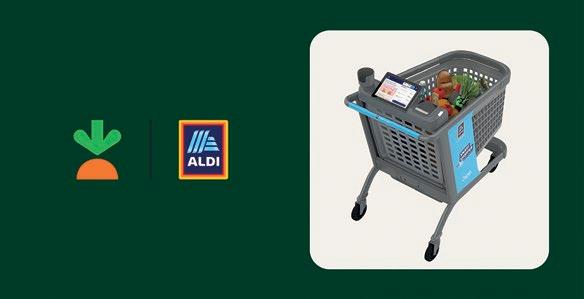
LuxCreo has announced an expansion of its partnership with ASICS to enable rapid local delivery of personalised 3D printed shoes and insoles.
“Diverse customer needs across different sports require us to transform the way we make our products so they are truly personalised,” says Genki Hatano, lead researcher in the Green Manufacturing Research Team, Future Creation Dept., ASICS Institute of Sport Science (ISS).
“Our research with athletes shows they feel the value of
personalised footbeds. This has inspired us to consider making personalised footwear accessible to all.”
LuxCreo 3D Printing Smart Factory, a full 3D printing technology stack, is part of ASICS Personalisation Studio, which also leverages Dassault Systèmes’ technology.
Resin developed by LuxCreo provides elasticity without permanent product deformation. Combining ASICS’ knowledge in biomechanics, footwear, and lattice structure with LuxCreo’s material creates, according to a press release, “unique personalised designs for lasting performance and comfort”.

Building on its viral New York Diner and as part of its 25th anniversary celebrations, Jellycat recently launched a Fish & Chips Experience at Selfridges London.
A new and globally exclusive collection features characters inspired by the British dish. Customers can book a slot and make their order from Jellycat’s Fish & Chips van in the Selfridges Toyshop on floor four.
The pop-up has received a rave review from Brittain Ladd, a supply chain consultant, Top 100 RTIH Retail Technology Influencer and former Amazon executive.
In a LinkedIn post, he said: “I must admit that when I first saw the video that I have posted, I thought I was watching an actual restaurant in action. However, as the video continued to play, I realised that what I was watching was stuffed toys being sold. The fish with a smile on its face gave it away.”
He added: “I believe Jellycat has the most creative store experience I’ve ever seen for any product. The stuffed animals, colours, wrapping, bags and stickers - it is truly exceptional and brilliant.”
“I’m amazed that The Walt Disney Company, Netflix, Amazon or Walmart hasn’t partnered with Jellycat. A TV
series or destination shops should be explored.”
Snapchat has launched a sports themed augmented reality (AR) Locker Room at Selfridges’ store on Oxford Street, London.
The pop-up was available throughout July and August, offering AR Mirror experiences.
Shoppers were able to virtually try on their favourite sports kits, interact with top sports brands and experiment with AR lenses. They could also see their appearance in a custom Team Selfridges Sportopia football kit.
A QR code let them save and share their favourite looks with friends and family.


In July, REWE Group reported that a location in Hamburg had launched Pick&Go.
Powered by Trigo technology, the store, which clocks in at 1.200 square metres in floor space and features 20.000 items, is pitched as Europe’s largest computer vision-based supermarket. It is also the first REWE Pick&Go store in northern Germany, and offers four ways to pay for purchases: cashless via Pick&Go via app; scanning and paying at the self-checkout terminal; shopping via computer vision support without scanning at the self-checkout terminal; standard payment process at the cash register.
A highlight is that the Pick&Go system now also covers the service counter for the first time.
Customers have the opportunity to purchase fresh meat, cheese and sausage products without having to wait at the checkout afterwards.
Nibble has hit one million automated negotiations through its platform.
In a LinkedIn post, Jamie Ettedgui, Co-Founder at Nibble, said: “This milestone is one of, if not the largest, human-tocomputer negotiation datasets out there, and I’m incredibly proud of what we’ve achieved.”
“Nibble is a long way from the original PDF it started out as.
Zippin and Aramark UK have partnered with LEGOLAND Windsor Resort to launch Europe’s first checkout-free store in a theme park. The store, which recently opened for the 2024 season, lets resort guests grab items without having to join a queue.
DUPLO Coffee Co, located in DUPLO Valley, sells a variety of sandwiches, snacks, coffee, and other drinks.
It was converted into a Zippin powered store where guests can enter with a credit card or mobile wallet, take what they want, and exit. There are no checkout lines and no stopping to scan purchases. Guests are automatically billed for what they take as they exit.
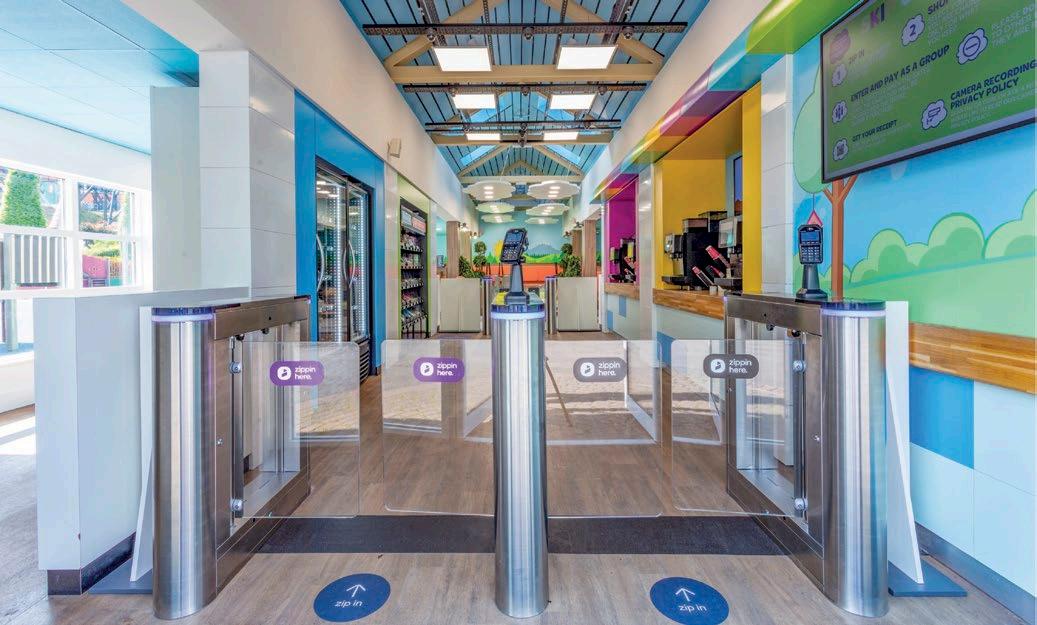
Here’s to many more milestones ahead. A massive thank you to our amazing customers for believing in our technology and trusting it to negotiate with their customers. Your support has made this achievement possible.”
Fast fashion giant Asos recently brought back its Sample Sale website, with brands including Pull & Bear, Topshop and French Association.
This previously proved to be a big hit with shoppers in October of last year and April of this year. Everything was priced at £5 and for the first time ever it was possible to haggle over prices using Nibble.
An immersive Beetlejuice Beetlejuice experience has gone live on Roblox, courtesy of Warner Bros. Motion Picture Group.
This includes an integrated virtual Fandango box office, where eligible users can purchase movie tickets - a first for the Roblox platform as it tests and invests in commerce.
[Beetlejuice] Escape the Afterlife was developed by Sawhorse.
Wow Bao has announced a full integration of its Hot Buns Club rewards programme in the metaverse.
In doing so, it lays claim to being the first fast casual restaurant to integrate a rewards programme and in real-life perks in the metaverse.
US-based Roblox players who visit its virtual experience, Dim Sum Palace, can search for clues to unlock a free Bao themed head UGC accessory, free Wow Bao product, and a chance to win Wow Bao for a year.
After they join the Hot Buns Club to claim the limited supply UGC items, they will receive a link via email for a free box of Wow Bao at their local grocer and be enrolled for a chance to win free
bao for a year. Additionally, as a member of the Hot Buns Club they are eligible for exclusive rewards and benefits.
“Wow Bao has never shied away from being a trailblazer in technology and innovation,” says Geoff Alexander, President and CEO at Wow Bao.
“By connecting gamers with our online ordering channels and rewards programme, we are inviting new customers to experience our brand, rewarding our most frequent guests, and embarking on something that has never been done.”
The second Retail Technology Innovations Report can be found in the last issue of RTIH magazine. It is also available to download at our website: www.retailtechinnovationhub.com
